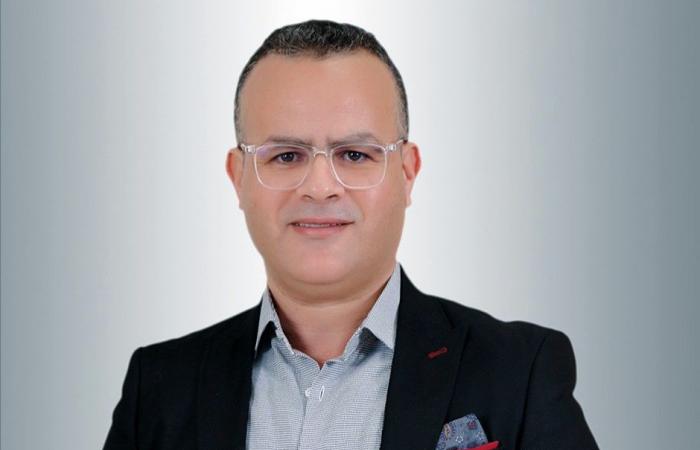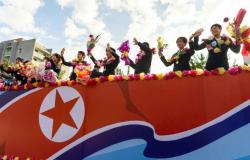Finances News Hebdo: How do MRE remittances support the purchasing power of Moroccans? And what place do MREs occupy in Morocco’s economic landscape?
Pr Hassan Edman: It should first be recalled that the Moroccan diaspora has more than 5.5 million members spread across more than 120 countries on 5 continents. This international network of Moroccans, its resources, its expertise and its attachment to the homeland constitute capital and opportunities for the economic development of Morocco. It is also important to note that the value of funds transferred by MREs is higher than other financial flows to Morocco, such as foreign direct investment, official development assistance and private loans. These transfers have a direct and significant effect on reducing poverty, particularly among families and those close to MREs, via the ame mechanism.improvement in purchasing power. Indeed, cash transfers lead to an increase in current expenditure, which improves the standard of living of migrant households. The same impact is spread to the population of non-migrant households through a multiplier effect. The contribution of funds from MREs often takes the form of entrepreneurial projects established in their regions of origin. Although they are limited and not very diversified (mainly in real estate and commerce), these investments contribute to local development by creating jobs and increasing tax revenues, particularly local ones (housing tax, municipal services tax, tax on construction operations, tax on subdivision operations, professional tax, drinking establishments, etc.). Similarly, additional income is injected into the local economic circuit, which improves the purchasing power of local citizens. In response to the second question, I would say that the place of MREs in the national economy is significant. Beyond the immediate impact on the local economy of their regions of origin or residence in Morocco, their foreign currency transfers play a crucial role by acting as a safety valve and a guarantee of stability of foreign exchange reserves. Thus, MREs present themselves not only as simple financial contributors, but also as guarantors of macroeconomic balances and drivers of development. However, I must point out that MRE transfers do not only bring benefits to the national economy. They can cause rentier behavior and an inflationary effect, through the mechanism of the “Dutch disease”, thus leading to an overvaluation of the exchange rate, which worsens the trade deficit.
FNH: Some experts predict that these flows could represent more than 10% of GDP in the medium term. What is your analysis of this?
Pr HE: Rap dataports and information notes on migration and development of the World Bank, which agree with the figures of the Office of Foreign Exchange and Bank Al-Maghrib, confirm this promising outlook. Indeed, the flow of remittances to Morocco constantly exceeds the flow of FDI, hence the indisputable macroeconomic contribution of these funds. The immediate contribution of these financial resources lies in the continuous supply of the foreign assets fund, thus securing and improving the Kingdom’s capacity to finance its imports. In addition, these funds paid support the economy and contribute to the creation of national wealth (GDP). The channels of transmission of this contribution to the GDP are consumption, investment and imports. Since 2019, the value of transfers has followed an upward trend. The same goes for the share of remittances from MREs in relation to GDP, which could exceed the record of 8.5% achieved in 2007 and thus reach 10% of GDP in 2025. Projections for the future are also optimistic for various reasons. First, the counter-cyclical nature of remittance flows, which tend to increase following difficult times, either in the migrants’ countries of origin or in the host countries. Thus, the sustained increase in these flows in recent years, in value and in share of GDP, is explained by the fact that we are still in the post-covid and post-Al Haouz earthquake phase. And then, MREs are attracted by the drop in transfer costs as well as the fluidity and speed of the digitalization of these operations. I would add to this the Qatar 2022 effect and the promising, large-scale projects and projects launched by the Kingdom, including the organization of the 2030 World Cup. In my opinion, the emotional attachment of new generations of Moroccans around the world to the Kingdom would become stronger, and their commitment in the social and economic life of their homeland would be more intense. I also believe that we have the right to be optimistic, given the constant increase in the number of migrants and the cultural and social evolution of new MRE entrepreneurs who will become more creative and more adventurous in high value-added investments. It should be said that even with a 10% contribution to GDP, this remains low compared to nations where the contribution of their migrants’ funds to financing current account deficits and public finances is higher. For example, according to the World Bank, the share of these flows in GDP in Tajikistan is 51%, in Tonga 44%, in Lebanon 36%, in Samoa 34% and in the Kyrgyz Republic 31%.
FNH: How are these inflows distributed at the Moroccan level? It is revealed that only 2% of these flows go to the productive sector and the majority of investment to real estate. What causes this gap?
Pr HE: Before discussing the why, I wanted to first briefly present the composition of the transferred funds. Current consumption expenditures represent nearly 71% of the overall structure. In second place, with nearly 21%, we find deposits made with financial institutions. The rest, almost 8% only, is intended to finance investments, of all kinds. Now, in the 8% of monetary transfers that go to investment, real estate monopolizes the bulk of the investment, at more than 80%. Far behind, come the other sectors thus representing less than 20% of the funds invested and almost 2% of the overall monetary flows issued by MREs to Morocco. I take this opportunity to draw attention to the inter and intra-regional inequalities of the use of transferred funds. Investments are particularly significant in some regions or provinces of origin, but in others they are low or even non-existent compared to the flow of transfers received. In general, investments in Morocco, particularly excluding real estate, remain below the potential and resources of MREs. Various reasons can justify this phenomenon. The lack of information and knowledge in productive but new or high-tech sectors hinders the full economic potential. In addition, current tax advantages and incentive measures are not pragmatic and advantageous enough to stimulate heavy or high-risk investments. In addition to these objective reasons, I see that the cultural and cognitive factor is also decisive at this level. The Moroccan entrepreneur, although he resides abroad, is generally far from the “Schumpeterian” profile, the innovator and the risk-taker. As a result, in the absence of stronger and more targeted incentive measures, They create cognitive barriers to diversification, hindering expansion into other more productive and profitable economic sectors.
FNH: Surveys have shown that MREs would be more inclined to increase their transfers if economic conditions in their country of origin are favorable. Should we say that Morocco does not offer enough attractive incentives to attract its diaspora to more productive sectors?
Pr HE: The obstacles that hinder investments in Morocco, whether undertaken by nationals, foreigners or MREs, are the same! Shortcomings in attracting entrepreneurial initiatives, particularly MDMs, still persist, despite official speeches and the reforms implemented. The most classic and which are often noted by reports from public and private institutions and NGOs, are firstly corruption and favoritism, especially in terms of licenses, authorizations and public procurement, and then the land regime in Morocco, and very particularly collective land. Unfortunately, in addition to the emotional attachment to the land of origin and the homeland, Morocco does not sufficiently encourage investments by its diaspora, even more so in large-scale projects with high added value. The most significant obstacles include the lack of capital and financing solutions, the complexity of administrative formalities, the lack of tax incentives as well as the unavailability or insufficient qualification of the required workforce. The most productive sectors are the most exposed to these obstacles, because they often require large initial investments in equipment and construction, advanced technologies and technical infrastructure, or even technical support and assistance.
FNH: What support measures have been put in place or could be put in place by Morocco to encourage MREs in their investment projects, so that they are directed towards sectors with high socio-economic value?
Pr HE: Before discussing what needs to be done to fill the above gaps, it is worth recalling the measures taken by the State in this regard. Indeed, the first mechanism to support and finance MREs in their projects, MDM Invest, dates back to 2009, suspended in 2011 and reactivated in 2015, then renewed in 2021 and then strengthened in 2024 by a second mechanism MDM Tamwil. These are financing formulas offering the Moroccan diaspora advantageous financing conditions, in priority support for projects in high-value sectors, such as industry and services related to industry, transport and logistics, energy and the green economy, information technology and others. In the same vein, the Ministry responsible for Moroccans living abroad, in partnership with the CGEM, launched an initiative to bring together all Moroccan entrepreneurs in the world in a 13th virtual economic region of the CGEM. This is a mechanism allowing MREs to support Morocco’s economic development and to have a space for exchange, information, support and guidance in their favor. Then, in July 2021, the supervisory ministry launched a digital platform for the guidance and support of MREs wishing to invest in the Kingdom. These support actions followed one another during the same year 2021, through the Maghrib Belgium Impulse project, launched with the support of the Belgian development agency (Enabel) and offering MREs residing in Belgium who are project leaders support and assistance before and after creation. I think that there is still a long way to go before we succeed in unleashing the untapped potential of MREs and their significant expertise in promising and diversified investments. Measures are recommended, in my opinion, in order to shorten this path. I would first mention the need for further simplification and reduction of administrative procedures, mainly obtaining permits and land regularization, which remain the main causes of abandonment of MRE projects. I also believe that it is appropriate to review tax benefits, training and awareness programs, both in Morocco and abroad, networking of national and international entrepreneurs and the involvement of Moroccan embassies and consulates in the effort to attract MRE investments.






